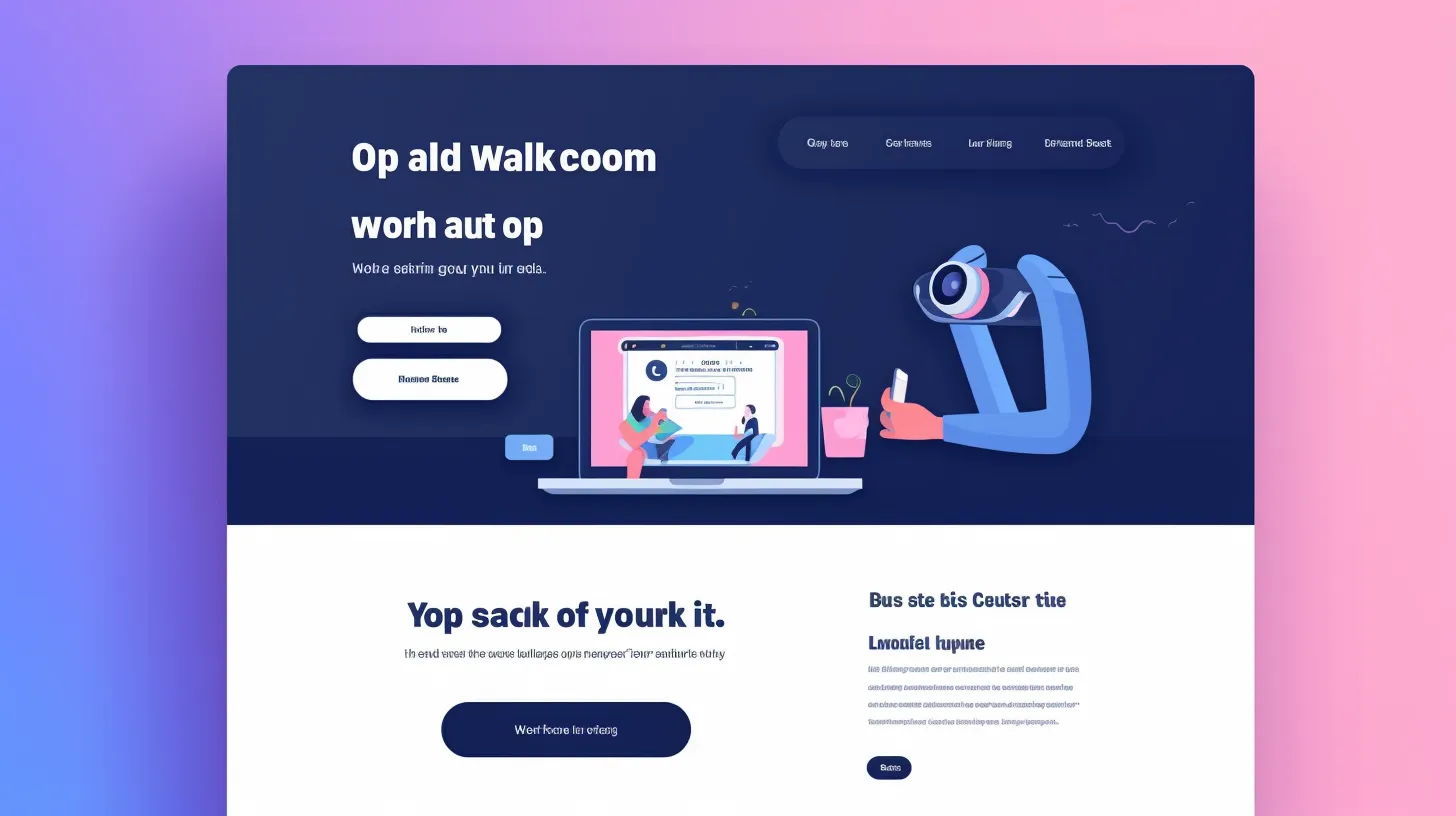Conversion Optimization Techniques: CRO Strategies In Internet Marketing Services
Are you looking to maximize your website's potential? Do you want to convert more visitors into customers? Then, conversion optimization techniques are what you need. In today's digital world, where online marketing is crucial for any business, it's essential to understand the importance of Conversion Rate Optimization (CRO) strategies.
CRO is the process of optimizing your website to increase the percentage of visitors who take a desired action. Whether it's filling out a form, making a purchase or subscribing to a newsletter – every action counts when it comes to driving revenue and growing your business. By implementing effective CRO techniques, internet marketing services can help businesses achieve their goals by improving user experience, increasing engagement and ultimately converting more visitors into customers. In this article, we will explore some key conversion optimization techniques that can help you improve your website's performance and drive better results for your business.
Understand Your Audience
You need to truly understand your audience if you want them to connect with your brand and take action, so don't ignore this crucial step in improving your conversion rates. Understanding what motivates your target market is key to creating effective marketing campaigns that resonate with them. Conduct thorough research into their demographics, psychographics, and behavior patterns. This will allow you to craft messaging that speaks directly to their needs and desires.
One way to gain insight into your audience is by conducting surveys or focus groups. Ask questions about their pain points, interests, and purchasing habits. This information can be used to create buyer personas, which are fictional representations of your ideal customers. By understanding the needs of each persona, you can tailor your content and advertising efforts accordingly.
Once you have a solid understanding of who your audience is, it's time to optimize your website design. Your website should be user-friendly and easy to navigate, with clear calls-to-action that guide visitors towards conversion. By designing an intuitive user experience that meets the needs of your target market, you'll increase the likelihood of converting visitors into loyal customers without feeling overwhelmed or frustrated on the site.
Optimize Your Website Design
When optimizing your website design, you need to focus on three key points: simplifying navigation, improving page speed, and enhancing visual appeal. You want to make it easy for visitors to find what they're looking for, without having to click through a maze of menus and pages. By speeding up your site's load time and making it visually appealing, you'll keep visitors engaged and increase the chances of conversion.
Simplify Navigation
By simplifying your website navigation, visitors can easily find what they need and ultimately feel more confident in making a purchase. Confusing and cluttered navigation can lead to frustration and eventually cause potential customers to leave the site altogether. Keep your navigation menu simple by using clear labels that are easy to understand. Group related pages together under relevant categories, and limit the number of options available in the main menu.
In addition, make sure your search bar is prominently displayed and functional. This allows visitors who know what they want to quickly find it without having to navigate through multiple pages. By simplifying your website's navigation, you will not only improve user experience but also increase the likelihood of conversion. Next, let's discuss how improving page speed can further enhance your website's performance.
Improve Page Speed
Improving page speed can significantly enhance your website's performance, allowing visitors to quickly access information and ultimately improve their overall experience. Slow loading times can be frustrating for users, leading them to abandon the site altogether. In fact, studies have shown that a delay of just one second in page load time can decrease conversion rates by up to 7%. By optimizing your website's code and images, as well as utilizing caching techniques and content delivery networks (CDNs), you can greatly reduce page load times and increase user satisfaction.
Enhancing visual appeal is another important aspect of improving conversion rates. By using high-quality images, clear typography, and a consistent color scheme, you can create a visually appealing website that engages users and encourages them to stay on your site longer. In the next section, we will discuss how optimizing your website's layout and design elements can further enhance its visual appeal.
Enhance Visual Appeal
To elevate the user experience, it's vital to enhance the visual appeal of your website through the use of high-quality visuals, consistent design elements, and clear typography. Here are some tips to help you improve your website's visual appeal:
- Use high-quality images that are relevant to your content. Low-quality images can make your website look unprofessional and turn off visitors.
- Create a consistent color scheme throughout your website to establish brand recognition and make navigation easier for users.
- Choose an easy-to-read font that is legible on both desktop and mobile devices.
- Simplify your layout by using white space effectively and avoiding cluttered designs.
- Make sure all graphic elements (logos, buttons, etc.) are properly aligned and sized correctly.
By following these tips, you can create a visually appealing website that engages users and keeps them coming back for more. Now let's move onto the next step: creating compelling content.
Get found online with Authority Solutions®' SEO.
Create Compelling Content
Crafting engaging content that captivates your audience is key in driving successful conversion optimization strategies. When creating content, it's important to understand your target audience and tailor your message to their needs and interests. Use captivating headlines, subheadings, and bullet points to make your content easy to skim through. Incorporate visuals such as images or videos to break up text and keep readers engaged.
In addition, make sure the tone of your content matches the tone of your brand. If you're a fun and playful brand, use humor in your writing. If you're a more serious brand, maintain a professional tone throughout your messaging. Above all else, ensure that the information provided is valuable and relevant to the reader. This will establish trust with them and encourage them to engage further with your brand.
Creating compelling content is just one aspect of driving successful conversion optimization strategies. The next step is testing and analyzing which pieces of content are resonating with your audience most effectively. By utilizing A/B testing or other analytical tools, you can determine what changes need to be made in order to improve performance metrics such as click-through rates or time spent on page. With this information at hand, adjustments can be made accordingly for even better results in future campaigns.
Test and Analyze
Discover how your content is resonating with your audience by testing and analyzing using A/B testing or other analytical tools, which will give you valuable insights to improve the performance of your campaigns. A/B testing involves creating two versions of a page, email or ad, and comparing their performance against each other. This process allows you to test different elements such as headlines, images, call-to-action buttons, and more.
Analyzing the results of these tests can help identify what works best for your audience and inform future optimizations. Analytical tools such as Google Analytics can provide valuable data on user behavior including bounce rates, time spent on page, and conversion rates. By analyzing this data regularly, you can make informed decisions about what changes to make to optimize your campaigns continuously.
Continuously improving your content based on feedback from tests and analytics is crucial in optimizing conversion rates. It's important to keep in mind that there is no one-size-fits-all solution when it comes to conversion optimization strategies since every audience is unique. However, by testing different approaches regularly and keeping an eye on analytics data, you'll be able to make informed decisions about how to better engage with your target audience.
Continuously Improve
Improving your content regularly is crucial for engaging with your audience and driving better results. Your website should always be up-to-date and relevant, providing the latest information that will keep visitors interested. By analyzing data from your website, you can identify areas where improvements can be made. Use this information to create new content or update existing pages to make them more appealing.
Another way to continuously improve is by testing different elements of your website, such as call-to-action buttons or images. A/B testing allows you to compare two versions of a page or element to see which performs better. This helps you make data-driven decisions about what changes need to be made in order to improve conversion rates.
Don't forget about user experience (UX). If visitors find it difficult to navigate your site or complete actions like filling out a form, they're less likely to convert. Continuously improving UX through regular updates and testing can help increase conversions and keep visitors coming back for more. Remember that small changes can have a big impact on overall conversion rates, so don't be afraid to experiment and try new things!
Frequently Asked Questions
What are some common mistakes businesses make when trying to understand their audience?
Are you struggling to understand your audience? Common mistakes include assuming everyone is the same, not researching their behavior, and failing to gather feedback. Avoid these errors for better results.
How can design elements like color and font impact conversion rates?
Choosing the right color and font can impact your conversion rates. Colors like red or orange can create urgency, while fonts like Arial or Times New Roman are easy to read. Test different combinations to find what works best for you.
What are some examples of compelling content that can be used to increase conversions?
Compelling content like customer testimonials, product demos, and educational videos can increase conversions. By showcasing how your product solves a problem or meets a need, you provide valuable information that persuades potential customers to take action.
What factors should be considered when deciding what to test on a website?
When deciding what to test on your website, consider factors like user behavior, conversion goals, and current pain points. Prioritize tests based on potential impact and ease of implementation. Keep testing to continually improve performance.
How can businesses ensure they are making data-driven decisions when analyzing their conversion optimization efforts?
To make data-driven decisions while analyzing conversion optimization efforts, you need to establish clear goals and metrics. Collect and analyze relevant data, identify opportunities for improvement, and conduct A/B testing to evaluate the effectiveness of changes.
Conclusion
Congratulations! You've just learned about some of the most effective conversion optimization techniques. By applying these CRO strategies to your internet marketing services, you can improve your website's conversion rate and ultimately increase revenue.
To recap, it's important to understand your target audience and what motivates them. Next, optimize your website design for ease of use and visual appeal. Compelling content that speaks directly to your audience is also crucial. Finally, don't forget to test and analyze your results so that you can continuously improve over time.
Remember, every business has unique goals and challenges. But by implementing these proven CRO techniques, you can give yourself a competitive edge in today's crowded online marketplace. So why wait? Start optimizing today and watch your conversions soar!







